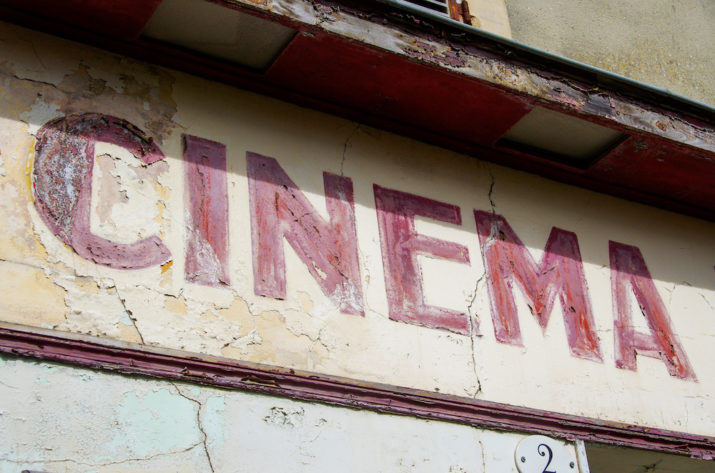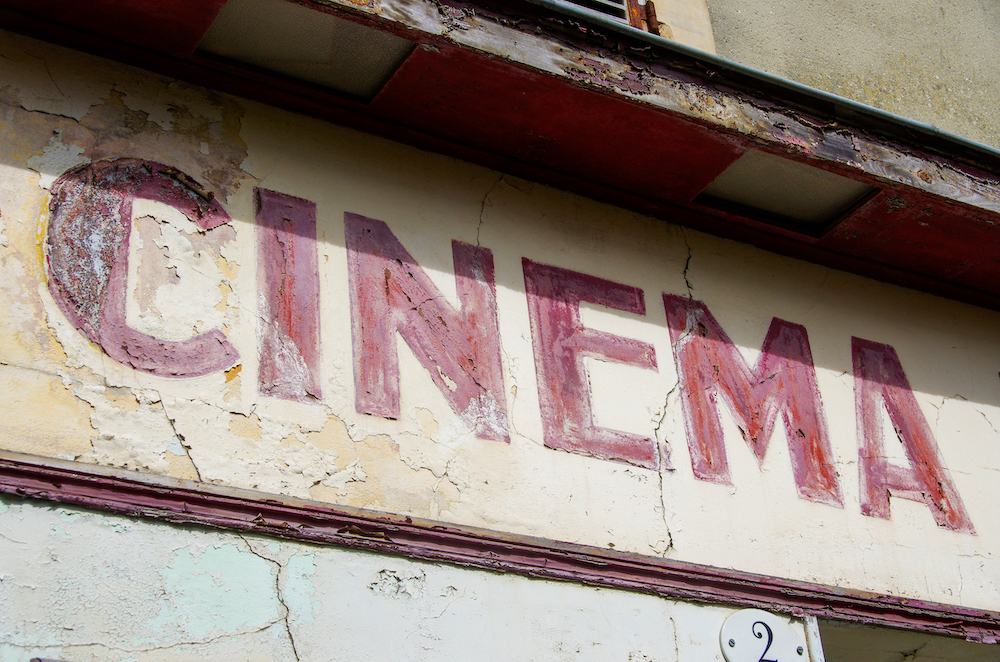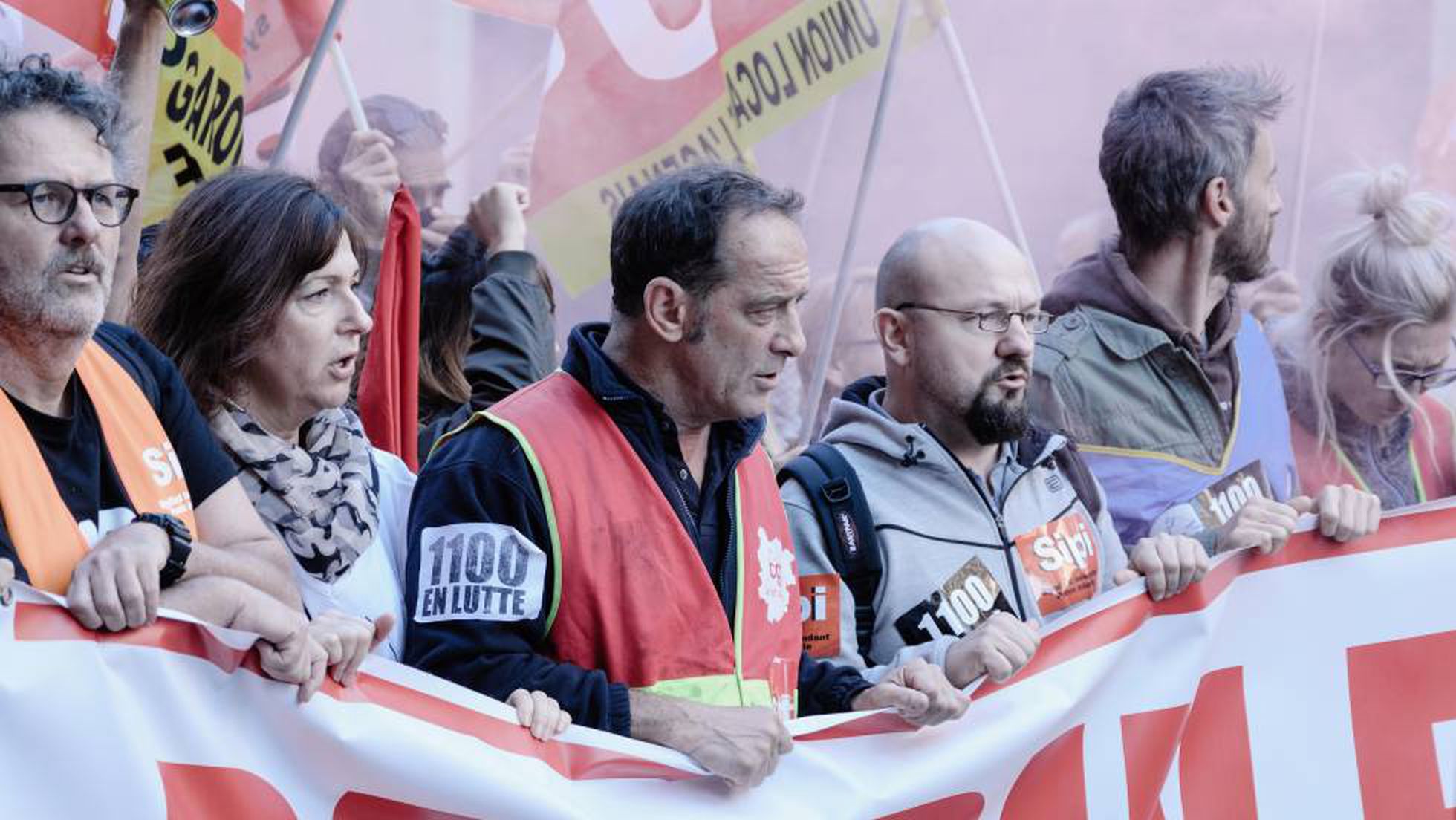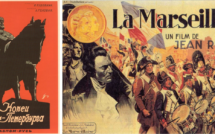

This is part of our special feature on European Culture and the Moving Image.
“Precarity” and “the precariat” have become two of the buzz words in studies of neoliberalism’s restructuring of the global economy and of the human sensorium. Originally signifying a social condition linked to poverty, precarity now refers to the rise in flexible and precarious forms of labor, the growth of the knowledge economy, the reduction of welfare state provisions, the suppression of unions, and the association of migration with illegality.[1] Judith Butler has been influential in shifting the focus away from precarity as a politico-economic concept to precarity as a politico-ethical-affective concept signifying a primary human vulnerability rooted in our embodied existence and our interdependency,[2] while Michael Hardt and Antonio Negri have proposed replacing the concept of the precariat with “multitude” to include not only the blue-collar labor traditionally associated with the working class but also new forms of labor that have emerged in post-industrial society, including “immaterial” and “affective” labor.[3]
The transformation of work under neoliberalism is one of the main preoccupations of the cinema of precarity and one of the reasons for the nostalgia for meaningful employment that permeates many of these films, which consistently imagine class solidarity in the narrow context of industrial labor posited as the last outpost in the struggle against the neoliberal technocratic order. One remarkable feature of the cinema of precarity is the consistency with which it maps two different conceptions of work—work as a core part of one’s sense of identity versus work as mere occupation—onto two different types of labor: 1) manufacturing labor, whose decline is linked to moral and spiritual decline, and 2) service sector occupations, generally depicted as inauthentic and degrading. As Charity Scribner has argued, with the figure of the worker pushed to the margins, contemporary European culture is infused with post-industrial nostalgia in response to the waning of the collective and of labor solidarity, as well as the waning of material history in the age of the virtual, which leaves us “longing for History itself—for the touch of the real that post-industrialist virtualization threatens to subsume.”[4]
Distinguished by a wide range of genre and stylistic reponses to the precarity of life under neoliberalism,[5] the new European cinema of precarity continues the legacy of older film traditions,[6] inscribing itself within a well-established tradition of realism often identified as a distinguishing mark of European cinema (as distinguished from Hollywood cinema). However, the realism of these films is often refracted through specific genre tropes or filmic devices—e.g., allegory, experimental cinema techniques, black comedy, cinema verité cinematography—as though traditional realism is deemed no longer sufficient to capture the complexity of Europe’s current political and moral crisis.[7]
Fehér isten/White God (Kornel Mundruczo, 2014) tells the story of thirteen-year-old Lili and her mixed-breed dog Hagen subject to a large mongrel fee imposed by the Hungarian government, which permits only pure ‘Hungarian’ breeds, a fee Lili’s estranged father refuses to pay, driving Hagen to the outskirts of Budapest and abandoning him there. The film follows Hagen’s journey through the city as he befriends other street dogs before being caught by a homeless man who sells him to a dog fighting ring. During his first fight, Hagen kills his opponent and runs away but is caught by animal control officers and taken to the city dog pound, from where he eventually escapes but not before freeing the other dogs, who follow him into the city, where Hagen methodically kills everyone who had harmed him. In the film’s climactic scene, Hagen is about to kill Lili and her father when she decides to play Liszt’s “Hungarian Rhapsody” on her trumpet, bringing Hagen and the other dogs to their knees. The film, which combines elements of revenge fantasy, adventure film, melodrama, Soviet cinema, Hitchcock, and post-colonial literature (it was inspired by J.M. Coetzee’s Disgrace), received mixed reviews. While Michael Sragow objected to the hypocritical depiction of Hungary’s and Europe’s outcasts as both “naturally loyal and affectionate” (like dogs) and as potential terrorists once they decide to rebel,[8] Samuel La France pointed to Mundruczo’s ignorance of the implications of his choice of Liszt’s piece—written by a German composer who “infamously overstated the piece’s roots in Gypsy folk songs and downplayed its actual heritage in Hungarian verbunkos, recruitment songs used for nationalistic-militaristic ends”—as evidence of “the wrongheadedness of his allegorical construction.”[9] Mundruczo has spoken at length about his dissatisfaction with what he calls dismissively “sociological films:”
I couldn’t tell the story of a gypsy family in Hungary even if I wanted to. I think that if you make a sociological film, you move even farther away from the truth. […] [F]olktales and fables say more about our reality and life than realism can. Of course, I can watch a realist, minimalist movie, but I always have a sense of ‘Yes, but that’s journalism.’[10]
Mundruczo’s words, which recall Antonioni’s reflections on his break from neorealism—“Nowadays it’s no longer important to make a film about a man whose bicycle has been stolen. It’s important to see what is inside this man whose bicycle was stolen, what are his thoughts, his feelings”[11]—suggest that it’s no longer sufficient to make a “social problem film” about the precarious lives of minorities. Leaving aside Mundruczo’s reluctance (or inability?) to distinguish realism from reality, one wonders whether by leaving the terms of his allegory about racial relations and rising nationalism in Eastern Europe broad enough to accommodate any marginalized, dispossessed, and victimized group—including the precariat, Hungarian ethnic minorities, migrants, refugees, and the homeless—the filmmaker does not actually invite us to see them as interchangeable. The allegorical approach to precarity—which Mundruczo construes as “a social problem” interchangeable with exile, territory, racism, colonialism, and class relations—ultimately determines the film’s vision of a possible response to the political and ethical crisis it depicts. Insofar as allegories, like fables and parables, have a pedagogical value, they appeal to common sense and presuppose the existence of shared universal values like humanity, hospitality, and love. Yet, it is precisely the absence of such shared values that the film seeks to expose.
Mark Jenkin’s Bait (2019), shot on 16mm film and hand-processed, centers on Martin Ward, a taciturn fisherman who resents the gentrifying intruders taking over his once-thriving Cornish fishing village. Martin and his brother Steven have been forced to sell their father’s harborside cottage to the Leighs, posh Londoners who have transformed it into a holiday retreat. While Martin still scrapes a living selling his catch of fish and lobster door-to-door, Steven has adapted to the new times by using their father’s boat for sightseeing trips. The escalating tensions between the two brothers, and between Martin and the incomers, threaten to boil over into physical violence, while the Leighs’ daughter, Katie, hooks up with Steven’s son, Neil, with tragic consequences. If Mundruczo’s reluctance to make “a social problem film” led him to allegory, Jenkin’s strategy of escaping the social problem film “ghetto” is to tap into the melodramatic address of silent cinema (expressive close ups, Eisenstein-inspired editing, post-dubbed dialogues), the mythic quality of Visconti’s La Terra Trema (1948), the visual poetry of Robert Bresson’s partial images, and the realism of British kitchen sink drama, and to refract the social problem—the disappearance of Cornwall’s traditional way of life—through an aesthetic one, the obsolescence of 16mm film. Like Mundruczo’s allegory, Jenkin’s marriage of form and content—the fishermen’s precarious life rendered visual through the precarious status of film in the digital era—distances us from the story and the characters, asking us to split our attention between the story and the allegorical frame (Mundruczo) or between the story and the rich cinematic language in which it is told (Jenkin). And like the films discussed below, Bait is infused with post-industrial nostalgia. Steven’s work in the tourist industry is presented as a “selling off:” close ups of Martin’s hands lowering lobster traps, coded visually as “authentic” and “beautiful,” are repeatedly contrasted with shots of Steven’s boat full of drunken tourists.
When, in Slava/Glory (Kristina Grozeva and Petar Valchanov, 2016), stuttering railroad technician Tsanko comes upon a large amount of money on the tracks and duly notifies the authorities, the cynical, ambitious, and impotent (undergoing IVF) PR executive Julia jumps on this opportunity to use the country bumpkin’s good deed to distract the public attention from a corruption scandal involving Bulgaria’s Minister of Transport. Her PR team organizes a sham ceremony in honor of Tsanko’s working-class hero, at which he is rewarded with a digital watch, while his own Russian Glory/Slava-brand watch—a gift from his deceased father—is taken away from him. The rest of this black comedy alternates between Tsanko’s unsuccessful attempts to reclaim his watch and Julia’s attempts to prevent him from exposing the corruption scandal at all costs (including blackmail). After a series of absurd situations, the abrupt and tragic end (Tsanko kills Julia with an axe) comes as a shock. Here post-industrial nostalgia—evident in the contrast between Tsanko’s “honest” manual labor and Julia’s PR shenanigans—is complicated by post-communist nostalgia for “the ordinary man” (Tsanko) who used to be “one of us” and who is now no more than a relic from another era, a part of Bulgarian history of which the neoliberal present is a malformation, “a misshapen branch extending far beyond the trunk.”[12] But the film also suggests that the communist past is hardly dead, but simply dressed up in capitalist garb: the award ceremony sequence, curated in exactly same way as communist ceremonies, shows that Big Brother is still watching, party politics giving way to the politics of the image (PR). The parallels with Bait are unmistakable: there the brothers’ family cottage is sold to wealthy Londoners, forcing Steven to abandon fishing and sell his soul to the tourist industry; here an “honest and poor” railway technician is deprived of his family heirloom and offered, as part of a cunning PR campaign, a “better” digital watch, which has no personal value for him. This re-coding of the communist past from “authoritarian” and “ideological” to “authentic” and “real”—in contrast to the morally and spiritually sterile and precarious neoliberal present—betrays the nostalgia of many post-communist Bulgarian films for the supposedly classless communist past.[13]
Populated by nonprofessional actors, Pedro Pinho’s Godardian-neorealist musical A fábrica de nada/The Nothing Factory(2017) explores the response of workers in an elevator factory on the outskirts of Lisbon after they learn that the factory is about to be closed. The film calls to mind kitchen sink dramas like Saturday Night and Sunday Morning (Kareil Reisz, 1960), but while Reisz’s film depicts manufacturing work as dehumanizing and oppressive, Pinho presents it as something to fight for, rather than fight against, and as constitutive of personal identity: e.g., workers speak of their machines as extensions of their bodies (“Factory, your neck veins are here, pulsating”) or address them as interlocutors (“Machine, you are going to get out of this torpor and get back to work”). As the workers debate possible lines of action—strike, occupation, self-management—the factory, with its imposing silent machines, transforms into a surreal space in which to revisit the history of labor, the legacy of communism and trade unions, and the after-effects of postcolonialism. In a series of Godardian voiceovers, Daniele, an Italian filmmaker interested in documenting the workers’ strike, positions precarity as the legacy of Cold War politics (the welfare state was merely an ideological response to the “threat of Communism”) and colonialism (“The present crisis is not a classic crisis [but] an endless end, a sustainable apocalypse. […] 200 years ago, European elites accepted the end of slavery only because capitalism promised much cheaper and better qualified labor”). By the end of the film, “precarity” refers not just to precarious employment in Portugal and beyond [an Argentinian factory, also self-managed by workers, calls to place an order] but also to precarious intimacies (Zé’s relationship with his Brazilian girlfriend disintegrates) and precarious national identities (there is a discussion of the decline in fertility rates across Europe and the increasing reliance on Danish sperm banks).
During an extended dinner sequence in A fábrica de nada someone argues that,
All technological evolution tends to replace living human labor with machine labor. This is one of the contradictions inherent in capitalism. We need to let go of the idea that capitalism is the exploitation of one class by another—this at least would be rational. But this is just the first layer, behind which is a totally irrational system.
To acknowledge the impossibility of conceiving the end of capitalism means that any resistance to capitalism can no longer be conceived in terms of class struggle but rather in terms of exposing the “contradictions inherent in capitalism.” Such a de-psychologized conception of capitalism—capitalism without capitalists and workers, without class struggle, a totally irrational and anonymous system reproducing itself in a psychological vacuum, unaffected by human desires—is foreign to Stéphane Brizé’s films La loi du marché/The Measure of a Man (2015) and its sort of a sequel En guerre/At War (2018). In the first few scenes of La loi du marché Thierry, an unemployed factory worker, meets with an unemployment agency employee, a financial advisor, who tells him to sell his apartment so that his loved ones are taken care of “after he is gone,” and a HR recruiter who confirms Thierry’s willingness to work flexible hours for less money only to inform him that he has no chance of getting the job he is interviewing for. Such scenes—already a genre trope of the new European cinema of precarity—foreground the central role that formerly secondary characters—bank advisers, unemployment agency employees, recruiters, often present as nothing more than disembodied voices on phone/computer platforms—now play in sustaining/determining our lives. Another scene, set at a performance management workshop during which Thierry’s peers dutifully dissect his poor body language, rhythm of speech and vocabulary, dramatizes the value of “performance” i.e., the self-management and disciplining of the neoliberal self. Once Thierry gets a job as a supermarket security guard—in another instance of post-industrial nostalgia his personal crisis follows the loss of factory work and his ‘demotion’ to the service sector—his work life is presented as a series of ethical tests as he is asked to monitor and discipline both customers and co-workers, one of whom (Mrs. Anselmi) commits suicide after she is caught stealing coupons, or risk losing his job. The scene in which Mrs. Anselmi is fired (her dismissal is conveniently framed in psychological terms—she betrayed the company’s trust—making downsizing appear no different from a break up), and the scene in which HR organizes a grief management workshop to deal with feelings of guilt among employees, give the lie to an earlier retirement party scene, in which Management was seen sending off another worker with a heartfelt goodbye. The HR Director’s speech seeks to psychologize away the structural violence to which all employees are subjected: work did not define Mrs. Anselmi’s identity, he tells them, and so no one can really know the reason (i.e., be accountable for) for her decision to end her life. If the retirement scene celebrates the importance of work to one’s sense of self, the grief management session simply denies the feelings of dehumanization and derealization that accompany the loss of work.
In En guerre/At War, classes are clearly drawn, as are the reasons for the conflict between them: the workers are fighting for their right to work, while the company’s management is motivated solely by greed. An automotive parts plant in Agen is deemed non-competitive and ordered closed by its German CEO (Hauser). The workers, having agreed two years prior to forego bonuses and work additional unpaid hours, vote to strike, led by Laurent. Alternating between negotiation scenes filmed like TV debates, protests and their news coverage, and long stretches of waiting, the film explores the nature of collective identity and solidarity under neoliberalism. One of the biggest obstacles to the workers’ Kafkaesque struggle is identifying and gaining access to the authorities before which they can make their demands: they spend most of their time trying to identify the seats of real versus symbolic power, demanding of various government officials: “What is your purpose?” It doesn’t take them long to find out that a CEO has more power than the president but, as their union rep argues, although the State might not be all powerful, it has a moral right to side with the workers—it’s a matter of social dialogue, which takes place outside the justice system. What is the ultimate authority, the film asks, that dictates the resolution of such conflicts? Is it the Kantian imperative, which describes how things ought to be, or the justice system, which describes how things are? Hauser’s response is clear: he dismisses the workers’ demands as “fantasy” or “utopia”, preferring instead to “live in this world and follow the rules of this world, not the utopian one you imagine.” But as Lyotard might say, this is not merely a matter of litigation; these two regimes—the unwritten moral law and the judicial system—cannot be reconciled.[14]

While Brizé paints the industrial debate as a class conflict, with workers and management in a perpetual face off, he is also attentive to the ways in which the nature of the struggle has changed. In an early scene Laurent lectures another worker on the importance of fighting “intelligently,” a strategy illustrated by numerous scenes set in meeting rooms and hallways, during which Laurent demonstrates the importance of knowledge capital: it is because he is knowledgeable about the company’s operations in a transnational context that he is able to argue that the factory is not “non-competitive,” that the real reason for closing it is to relocate operations to Romania, in a factory with fewer workers, working for less.To fight “intelligently” workers must think like accountants and political economists and understand the workings of global capitalism—la loi du marché. This does not, however, mean that what the workers are fighting for is a paycheck at the end of the month. At the meeting with Hauser Laurent underscores the fundamental role that work plays in the construction of identity and its intimate connection with human dignity and feelings of self-worth: “We have come here for money? No, we don’t care about money. We want work!”
Temenuga Trifonova is Associate Professor of Cinema and Media Studies at York University. She is the author of The Figure of the Migrant in Contemporary European Cinema (2020), Warped Minds: Cinema and Psychopathology (2014) and The Image in French Philosophy (2007), and editor/contributor of Screening the Art World (forthcoming), Contemporary Visual Culture and the Sublime (2017) and European Film Theory (2008). Her articles have appeared in the Routledge Encyclopedia of Film Theory, Cinema & Cie, CTheory, SubStance, Space and Culture, Rivista di Estetica, Studies in Comics, The European Journal of American Culture, Studies in European Cinema, Cineaste, Film and Philosophy, CineAction, Scope, and others.
References
[1] The term ‘precariat’ was popularized by Guy Standing, who argued that the restructuring of global and national economies in the last 40 years has produced a new global class characterised by chronic insecurity. Standing’s ideas have been taken up by political theorists, policy makers and activists—the term ‘precariat’ was used by activists in the Indignados, Nuit debout, and the Occupy movements. Guy Standing, The Precariat: The New Dangerous Class (London: Bloomsbury, 2014).
[2] Judith Butler, Precarious Life: The Powers of Mourning and Violence (London: Verso, 2006).
[3] Michael Hardt and Antonio Negri, Multitude: War and Democracy in the Age of Empire (London: Penguin Books, 2005). While until recently scholarship on the relation of cinema to neoliberalism and precarity was limited to economic considerations—e.g. studies of the neoliberal transformations of the global film industry (Kapur and Wagner 2011) or of cinematic representations of the world of high finance (Mazierska and Kristensen 2017)—film scholars have now begun exploring the intersections between neoliberal ideologies of selfhood, gender, race, labour, and colonialism, and the aesthetic and political aspects of the new European “cinema of precarity,”[3] and developing a new critical vocabulary to theorize the new kinds of social relations these films depict, from “flexible solidarity” (Gott 2018) and “precarious intimacies” (Stehle and Weber 2020) to “the gift economy” (O’Shaugnessey 2009), “precarious subjectivities (Sticchi 2021) and “cruel optimism” (Berlant 2011). See J. Kapur and K. B. Wagner, ed. Neoliberalism and Global Cinema: Capital, Culture, and Marxist Critique (London: Routledge, 2011); Ewa Mazierska and L. Kristensen, ed. Contemporary Cinema and Neoliberal Ideology (London: Routledge, 2017); Michael Gott, “Work, Home, and Flexible Solidarity in Les neiges du Kilimanjaro (2011) and Ma part du gateau (2011).” Contemporary European Cinema: Crisis Narratives and Narratives in Crisis, ed. Betty Kaklamanidou and Ana M. Corbalán (New York: Routledge, 2018), 37-51; Maria Stehle and Beverly Weber, Precarious Intimacies: The Politics of Touch in Contemporary Western European Cinema (Evanston, IL: Northwestern UP, 2020); Martin O’Shaugnessey, The New Face of Political Cinema: Commitment in French Film since 1995 (New York: Berghahn Books, 2009). Francesco Sticchi’s Mapping Precarity in Contemporary Cinema and Television (London: Palgrave Macmillan, 2021) explores the expression of precarious subjectivities in contemporary cinema, focusing on three main chronotopes: anxiety, depression, extinction.
[4] Requiem for Communism (Cambridge, MA: MIT Press, 2005), 9.
[5] The new cinema of precarity ranges from allegorical films like Fehér isten/White God (Kornel Mundruczo, 2014, Hungary), Lazzaro felice/Happy as Lazzaro (Alice Rohrwacher, 2018, Italy) and Transit (Christian Petzold, 2018, Germany), through experimental films (Bait, Mark Jenkin, 2019, UK) and black comedies (Slava/Glory, Kristina Grozeva and Petar Valchanov, 2016, Bulgaria), to social dramas (Stéphane Brizé’s La loi du marché/The Measure of a Man (2015, France) and En guerre/At War (2018, France) and worker musicals (A fábrica de nada/The Nothing Factory (Pedro Pinho, 2017, Portugal).
[6] Many of these films hark back to older film traditions [e.g. Bait invokes, in the same breath, silent cinema, avant-garde cinema, British kitchen sink cinema and Visconti’s early neorealist film La Terra Trema/The Earth Trembles (1948); Lazzaro felice recalls the magic neorealism of the Taviani brothers; Fehér isten continues the tradition of allegorical, socially critical Hungarian films of the 1960s and 1970s; A fábrica de nada combines kitchen sink realism with Nouvelle Vague (specifically Godard) influences; Brizé’s films recall neorealist working-class chornicles of unemployment; Slavacontinues the legacy of pre-1989 Bulgarian subversive comedies like Nikolay Volev’s Gospodin za edin den/King for a Day (1983) and the darkly absurdist films of the Czech New Wave).
[7] Needless to say, the films discussed here could have been grouped differently (and other films could have been chosen) but for the purpose of this analysis I have decided to consider them in terms of the different responses—or ‘adjustment strategies’ (Berlant)—to precarity they represent: nostalgia [the framing of precarity by post-communist nostalgia (Slava) and nostalgia for the medium of film (Bait)], allegory (Fehér isten), and class [mostly male] solidarity (En guerre). On women and precarity, see recent studies of the gendered experience of austerity [Helen Davies and Claire O’Callaghan, ed. Gender and Austerity in Popular Culture: Femininity, Masculinity and Recession in Film and Television(London: I.B.Tauris, 2017)]; studies of the relationship between women, work and precarity that demonstrate capitalism’s appropriation of second-wave feminist concepts [Rosalind Gill and Christina Scharff, ed. New Femininities: Postfeminism, Neoliberalism and Subjectivity (London: Palgrave Macmillan, 2011), Diane Negra and Yvonne Tasker, ed. Gendering the Recession: Media and Culture in an Age of Austerity (Durham, NC: Duke UP 2014)], and feminist analyses of gender tropes such as ‘crisis masculinity’ and ‘coping women’ in recent recession-era films [Diane Negra, Gendering the Recession: Media and Culture in an Age of Austerity (Durham, NC: Duke UP, 2014)].
[8] https://www.filmcomment.com/blog/white-god-kornel-mundruczo-review/
[9] https://cinema-scope.com/currency/white-god-kornel-mundruczo-hungarygermanysweden/. On how Hungarian Liszt is, see http://faculty.ce.berkeley.edu/coby/essays/liszt.htm
[10] https://www.filmcomment.com/blog/ndnf-interview-kornel-mundruczo-white-god/
[11] http://www.davidbordwell.net/blog/category/directors-antonioni/
[12] https://variety.com/2016/film/reviews/glory-review-slava-1201831700/
[13] https://vagabond.bg/sweet-power-nostalgia-854
[14] Jean-Francois Lyotard, Differend: Phrases in Dispute (Minneapolis: U of Minnesota Press, 1989).




